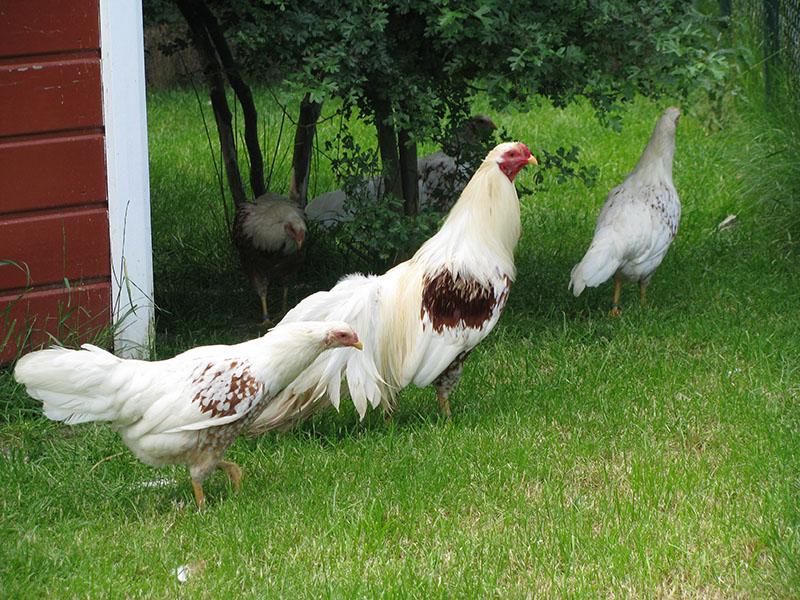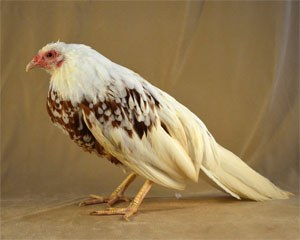Yokohama Chickens
 In 1864, a number of Japanese long-tailed fowls, of the breed Minohiki, arrived in
Paris. They were rumored to have up to 27 foot tails, and exclusively lived in Japan
until 1922, when they died out.
In 1864, a number of Japanese long-tailed fowls, of the breed Minohiki, arrived in
Paris. They were rumored to have up to 27 foot tails, and exclusively lived in Japan
until 1922, when they died out.
These imported chickens didn't keep the name Minohiki though, and were renamed after the port city they left from: Yokohama, Japan.
Those Yokohama chickens were drastically different from the modern breed, because in 1869, a German man grew interested in the birds. A man named Prosche from Dresden, Germany, purchased three Yokohama chickens. When they arrived, however, the female was dead.
Another German man, author Bruno Duringan, imported another number of birds straight from Japan in 1902. Again, only males survived the journey. In order to give the breed some hardiness, Duringan created today's Yokohama: a cross between the original Yokohama and the Malay, Phoenix, common Game fowl, and Sumatra lines.
 Today's Yokohama arrived in America at an undocumented point, but was recognized by
the American Poultry Association in 1981 in the entirely white and red-shouldered
varieties.
Today's Yokohama arrived in America at an undocumented point, but was recognized by
the American Poultry Association in 1981 in the entirely white and red-shouldered
varieties.
Characteristics
The Yokohama's plumage is either pure white, or white with red saddle feathers. The purity of their white feathers is a result of a dominant white gene, but this gene has an incomplete dominance effect with a red gene, resulting in the red shoulders, breast, and back.
Their saddle feathers are long, but longer still are their sickle feathers, which touch the ground and result in three to four foot long tails. Yokohamas also have a walnut comb, and a very alert temperament.
Males typically weigh 4.5 lbs, and females are around 3.5 lbs.
The Yokohama is primarily an ornamental or exhibition breed.
The breed as a whole is happiest when they are free to wander about a large distance.
Breeding and Brooding
The Yokohama is a poor egg-layer, at 80-100 eggs annually, but are good mothers. They become broody after about 12-14 eggs, ceasing to lay eggs, and eat and drink less than their typical amount in an attempt to hatch the eggs they've laid.
The chicks retain the hardiness the breed was bred into, but they require extra protein as they grow their tails.
References
The Livestock Conservancy PO Box 477, 33 Hillsboro St, Pittsboro, NC 27312
